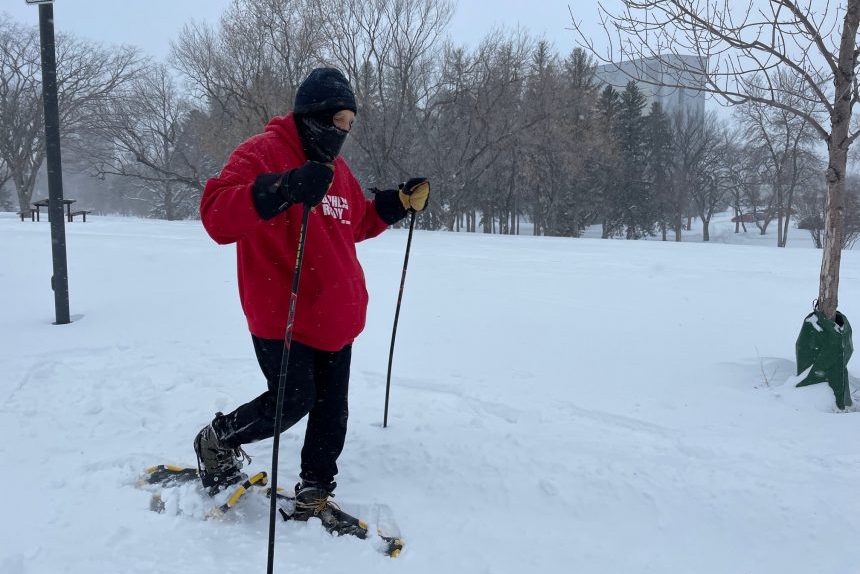
USask prof says extreme cold can be ideal for exercise
Dr. Phil Chilibeck practises what he teaches — in this case, enjoying a late afternoon of snowshoeing for exercise in a wind chill of -24 C.
By Libby Giesbrecht, Saskatoon / 650 CKOMChilibeck is a professor of kinesiology at the University of Saskatchewan who teaches courses in exercise physiology. His classes cover cold-weather topics and he says the science supports the theory that some exercise in the extreme cold has health benefits.
While doing some research on cold weather and the body, Chilibeck said researchers had people sit in a chamber where they slowly lowered the room temperature.
“Your muscles actually start to vibrate at a moderately cold temperature, so before you start to shiver, your muscles start to vibrate and that might lead to increased energy expenditure,” Chilibeck said.
If a person gets to the point where they are cold enough to shiver, that can increase their energy expenditure as well, because muscles are contracting. Chilibeck said that means people are going to be using more energy when they’re exercising in the cold.
As well, one of two types of adipose tissue (or body fat) — brown — gets activated and gives off heat in the cold.
“That’s another way that we might expend a little bit more calories than just standing around in the heat,” Chilibeck explained.
He recommended snowshoeing or cross-country skiing to really embrace the extreme cold through exercise, since those are more aerobic activities than simply running or walking. He said he tends to snowshoe more himself in the extreme cold because his cross-country ski boots are only well insulated into the -20 temperatures.
His snowshoe boots, though, can handle anything as low as -30 or -35.
“They’re great activities. Cross-country skiing, you’re working your arms and your legs and so it provides a really good aerobic workout,” Chilibeck said.
That translates to more calories burned, which can also be accomplished by snowshoeing in deeper snow for more resistance.
“You’re getting a good calorie burn from just walking in the snow with snowshoes if you’re walking in deep enough snow as well,” he said.
More energy being used can also translate into a warmer body for the person doing the activity.
Chilibeck said he can go for an hour or even a bit longer if his snowshoeing is vigorous.
“The thing that limits me is my feet … After about an hour, an hour and a half, my feet will get cold in -30,” he shared, adding that, having had frostbite previously, that damage makes his toes more susceptible to the cold.
His biggest tip for proper cold weather exercise is in the outfit — dressing in layers, particularly.
Chilibeck was sporting a T-shirt, two heavier track shirts, track pants, long johns and thermal socks for his snowshoeing Friday. He also had good-quality mittens, a balaclava and his snowshoeing boots.
“The key here is … wearing layers because the layers trap air in between them and that acts as insulation,” Chilibeck explained. “The key is to keep your toes and fingers warm; that’s what gets cold first.”
That’s because in the cold, the body will constrict blood vessels closer to the skin and draw blood towards the central part of the body to protect its organs.
Chilibeck said his motivation to get outside in the extreme temperatures comes from going a little stir-crazy.
“I find just sitting around inside the house drives you crazy, especially when it’s -20, -30 for two or three weeks in a row, and so just to get outside for an hour (or) an hour and a half every day, it just keeps you sane and improves your psychological outlook,” he shared.
“Get out there, even if it’s 20 minutes a day. Just (don’t) be afraid of the cold weather as long as you’re dressed right,” he said, offering encouragement to anyone hoping to get their blood pumping in Saskatchewan’s frigid temperatures.
